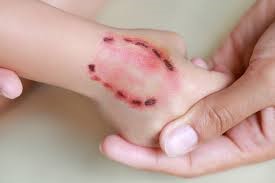Rabies, an infectious disease caused by a virus, poses a significant threat as it targets the central nervous system. Once symptoms manifest, the disease is almost always fatal. Domestic dogs serve as the primary carriers, accounting for up to 99% of human transmissions. However, it’s crucial to recognize that both domestic and wild animals can harbor the rabies virus.
Transmission occurs through contact with infected saliva, typically through bites, scratches, or direct exposure to mucous membranes such as the eyes, mouth, or open wounds. Alarmingly, children aged 5 to 14 are particularly vulnerable to rabies infection due to their propensity to interact with animals and their limited awareness of preventive measures.
In most cases, infection occurs following a deep bite or scratch from an animal carrying the rabies virus, with dogs being the predominant source. Additionally, transmission can occur through direct contact between infected saliva and mucous membranes or fresh skin wounds, emphasizing the importance of prompt medical attention and vaccination in cases of potential exposure.
In the US, the primary source of human rabies deaths has shifted from dogs to hematophagous bats, marking a significant change in the region’s rabies landscape. This transition underscores the successful interruption of dog-mediated transmission. However, bat-mediated rabies poses an emerging public health concern in Australia and Western Europe.

With the exception of Antarctica, rabies is still a global disease that affects every continent. Asia and Africa account for more than 95% of human deaths from rabies. Despite affecting many people, instances of rabies are remarkably underreported, leading to discrepancies between the number of cases officially recorded and the true disease burden.
One of the neglected tropical diseases (NTDs) that primarily affects vulnerable, underprivileged, and marginalized groups is rabies. Despite the development of efficacious human vaccinations and immunoglobulins, many underprivileged people still struggle to obtain these preventive treatments.
Managing a rabies exposure can impose a severe financial strain on affected families, particularly in regions where the average daily income may be as low as US$ 1–2 per person. The average cost of rabies post-exposure prophylaxis (PEP), estimated at US$ 108, coupled with travel expenses and loss of income, can escalate into a catastrophic burden, exacerbating the already precarious financial situation of these families.
The initial signs of rabies might resemble flu symptoms, such as weakness, fever, headache, and discomfort around the bite area. These can persist for days. Later on, symptoms progress to cerebral dysfunction, anxiety, confusion, and agitation. As the disease advances, delirium, abnormal behavior, hallucinations, hydrophobia (fear of water), and insomnia may occur. This acute phase typically lasts 2 to 10 days. Once clinical signs appear, rabies is almost always fatal, with treatment mainly being supportive. Fewer than 20 documented cases of human survival from clinical rabies exist, with only a handful having received no prophylaxis before or after exposure.
In animals, the signs, symptoms, and outcomes of rabies can resemble those in humans, including early nonspecific symptoms, acute neurological symptoms, and eventual death.

Annually, over 29 million people worldwide undergo post-exposure prophylaxis (PEP), preventing hundreds of thousands of rabies deaths. The global economic burden of dog-mediated rabies is estimated at US$ 8.6 billion per year, not including the psychological trauma inflicted on individuals and communities.
Prevention measures include:
1. Dog Vaccination: Vaccinating dogs, including puppies, is the most cost-effective way to prevent rabies in humans as it halts transmission at its source and reduces the need for PEP.
2. Education: Teaching both children and adults about dog behavior and bite prevention is crucial. This education, when integrated with rabies vaccination programs, can decrease human rabies incidence and alleviate the financial strain of treating dog bites.
3. Immunisation of People: Highly effective vaccines are widely accessible for immunizing people against rabies both before and after possible exposure (Post-Exposure Prophylaxis, or PEP). Pre-Exposure Prophylaxis, or PrEP, is especially advised for people working in certain high-risk occupations, such as laboratory workers handling live rabies and related viruses, or for people whose personal or professional activities entail close contact with bats or other potentially infected mammals (such as wildlife rangers and animal disease control personnel). Furthermore, residents of isolated, rabies-endemic areas with restricted access to rabies treatments, as well as outdoor travelers, may benefit from PrEP.
Rabies continues to be a significant concern, but it is preventable with deliberate interventions. Strong preventive measures are critically needed, as the devastation caused by this virus disease highlights. The armament against rabies is formidable, ranging from mass dog vaccination efforts to prompt post-exposure prophylaxis. Tailored approaches are necessary to handle high-risk occupations and areas with limited access to medical resources. It is crucial to teach communities how to prevent bites and identify early signs. Pre-exposure prophylaxis should also be given priority for people at risk, such as wildlife workers and visitors to endemic areas. Together, immunization campaigns, educational initiatives, and focused interventions can reduce the worldwide human and financial costs associated with rabies.
Sources
- https://www.who.int/news-room/fact-sheets/detail/rabies
- https://www.cdc.gov/rabies/symptoms/index.html#:~:text=As%20the%20disease%20progresses%2C%20the,and%20treatment%20is%20typically%20supportive.
- Source: Punch Newspapers https://punchng.com/biting-of-objects-seizures-signs-of-rabies-in-dogs-veterinarian/?amp




